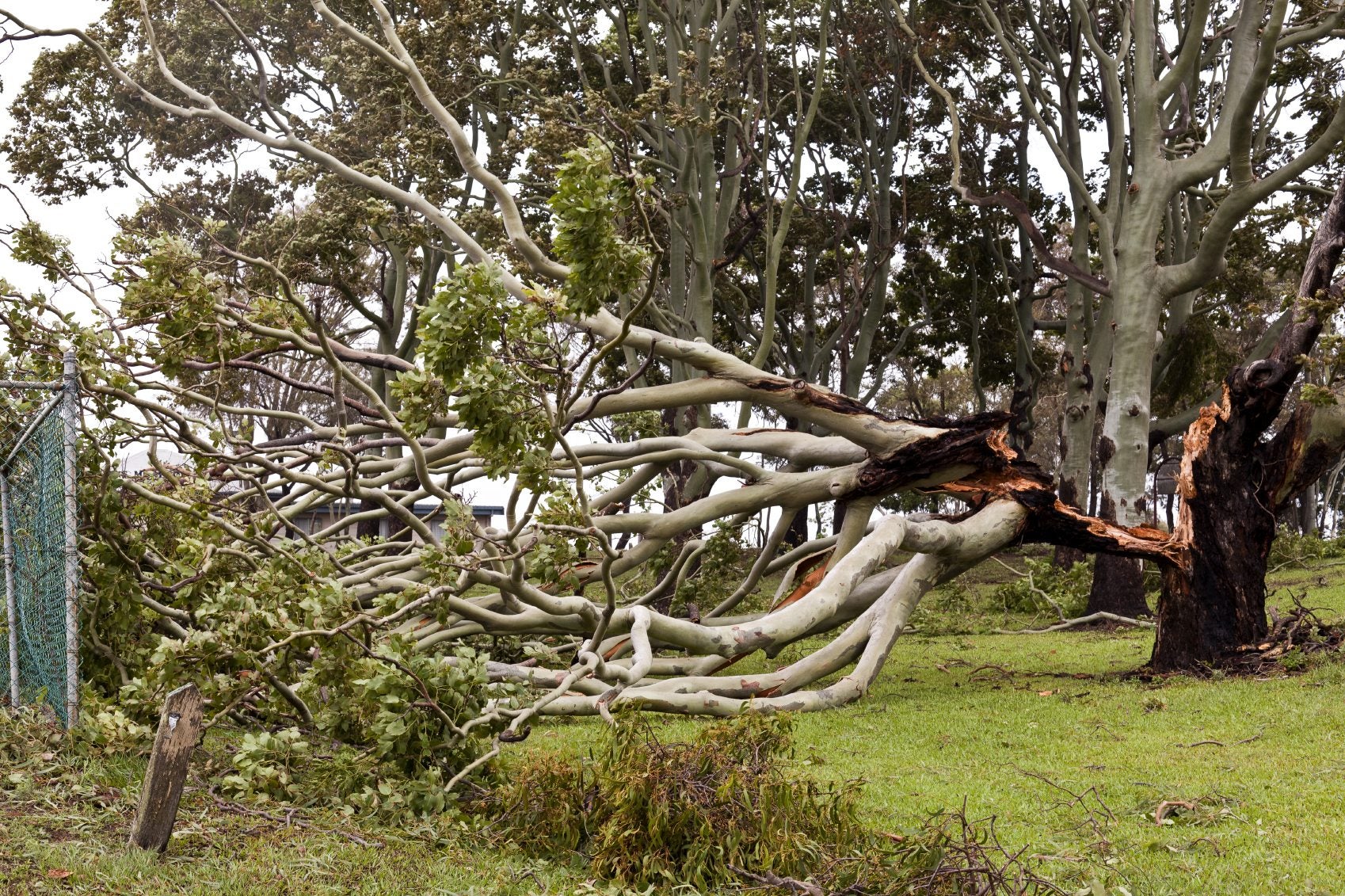Eucalyptus Hazards: Tips On Growing Eucalyptus In Wind Prone Areas


Eucalyptus trees are known for their large stature. Unfortunately, this can make them hazards in the home landscape, especially in wind-prone areas. Keep reading for more information and tips on preventing eucalyptus tree wind damage.
Eucalyptus Trees and Wind
Did you know that there are over 700 species of eucalyptus? Most of them hail from Australia. Eucalyptus trees, in their native habitat, are used to non-nutritious soils. They also have to withstand a lot of leaf-munching predators like koala bears. These conditions help keep their size in check. Eucs, as they are sometimes called, have to grow quickly – in order to beat the competition.
Eucalyptus trees have far fewer predators and are often installed in much richer soils when they are grown in North American and European parks and gardens. In these conditions, they don’t have to dig deep to find nutrients. These evergreen transplants grow shallow roots and are generally unchecked by pests or competition.
Growing eucalyptus in wind prone areas can be dangerous. Eucalyptus hazards include branch breakage, limb drop and complete tree failure at the base of the root plate – which is called wind throw. Most eucalyptus trees and windy conditions don’t go well together.
Preventing/Treating Eucalyptus Tree Wind Damage
The best way to prevent eucalyptus tree wind damage is to choose wind tolerant eucalyptus species which are shorter and have smaller, lower canopies that are less susceptible to breezes. A few of these wind tolerant eucalyptus trees include:
- E. apiculate
- E. approximans
- E. coccifera
While your eucalyptus tree is becoming established, prevent all soil and moisture competition by removing weeds. This way it can develop a stronger root system.
It is important to regularly prune your eucalyptus in wind prone areas. Prune in fall before there is risk of frost. Create a good structure. Remove top heavy branches. Some people like to coppice their eucalyptus by cutting them to about 18” (46 cm.) tall every year. This is best for multi-trunk trees that you want to keep in shrub form. Keep the tree thinned out of excess foliage as it matures. This will allow more wind to pass through the canopy without causing damage.
Gardening tips, videos, info and more delivered right to your inbox!
Sign up for the Gardening Know How newsletter today and receive a free copy of our e-book "How to Grow Delicious Tomatoes".
Younger trees can be staked low on the trunk. Do not keep or add a stake that is right next to the trunk. This is a recipe for a lazy, weak tree. Trees need to move with the wind. When you stake a eucalyptus, use sturdy stakes that are installed at least 1-3’ (.3 - .6 m.) from the trunk at right angles to the wind. Secure them with rubber ties or cloth that won’t damage the bark.
Check your trees regularly for wind damage. If branches break or crack, remove them.
When a tree experiences wind throw, the soil around the roots is often lifted up and loosened. Tamp it down again so the soil is firm and solid around the roots. You can also stake trees damaged and bent over by wind throw. Stake them as described above with the stakes at least 1-3’ (.3 - .6 m.) from the trunk.

Karen Boness is the founder of Wild Willow Design, an Australia-based company that specializes in ecological landscape design.
-
 My Homemade Orchid Fertilizer Always Brings More Blooms – Here's The Easy Recipe That Transforms Plants
My Homemade Orchid Fertilizer Always Brings More Blooms – Here's The Easy Recipe That Transforms PlantsScientist-turned-gardener Mary Ellen Ellis shares her tried-and-tested DIY orchid fertilizer recipe, plus more ingredients to try for healthy, happy plants.
By Mary Ellen Ellis
-
 Looking For Plants To Give You The Soft And Fuzzies? Try These 5 Fuzzy Leaf Plant Options
Looking For Plants To Give You The Soft And Fuzzies? Try These 5 Fuzzy Leaf Plant OptionsLovers of texture, drama, silver foliage and tactile plants will adore these special sensory garden additions. These fuzzy leaf plant options will leave you all aglow
By Susan Albert